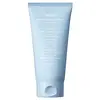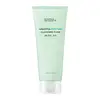What's inside
What's inside
 Key Ingredients
Key Ingredients

 Benefits
Benefits

 Concerns
Concerns

No concerns
 Ingredients Side-by-side
Ingredients Side-by-side

Water
Skin ConditioningGlycerin
HumectantHydrogenated Palm Acid
Potassium Hydroxide
BufferingPotassium Cocoyl Glycinate
Sedum Sarmentosum Extract
HumectantSodium Hyaluronate
HumectantHydroxypropyltrimonium Hyaluronate
Sodium Acetylated Hyaluronate
HumectantHydrolyzed Hyaluronic Acid
HumectantHyaluronic Acid
HumectantGlyceryl Stearate
EmollientPolyquaternium-7
Acrylates/C10-30 Alkyl Acrylate Crosspolymer
Emulsion StabilisingSodium Phytate
1,2-Hexanediol
Skin ConditioningAllantoin
Skin ConditioningPanthenol
Skin ConditioningSodium Bicarbonate
AbrasiveButylene Glycol
HumectantGlycine
BufferingSerine
MaskingGlutamic Acid
HumectantAspartic Acid
MaskingLeucine
Skin ConditioningAlanine
MaskingLysine
Skin ConditioningHydrolyzed Sodium Hyaluronate
Skin ConditioningSodium Hyaluronate Crosspolymer
HumectantArginine
MaskingTyrosine
MaskingPhenylalanine
MaskingProline
Skin ConditioningThreonine
Valine
MaskingIsoleucine
Skin ConditioningHistidine
HumectantCysteine
AntioxidantMethionine
Skin ConditioningPotassium Hyaluronate
Skin ConditioningSodium Benzoate
MaskingWater, Glycerin, Hydrogenated Palm Acid, Potassium Hydroxide, Potassium Cocoyl Glycinate, Sedum Sarmentosum Extract, Sodium Hyaluronate, Hydroxypropyltrimonium Hyaluronate, Sodium Acetylated Hyaluronate, Hydrolyzed Hyaluronic Acid, Hyaluronic Acid, Glyceryl Stearate, Polyquaternium-7, Acrylates/C10-30 Alkyl Acrylate Crosspolymer, Sodium Phytate, 1,2-Hexanediol, Allantoin, Panthenol, Sodium Bicarbonate, Butylene Glycol, Glycine, Serine, Glutamic Acid, Aspartic Acid, Leucine, Alanine, Lysine, Hydrolyzed Sodium Hyaluronate, Sodium Hyaluronate Crosspolymer, Arginine, Tyrosine, Phenylalanine, Proline, Threonine, Valine, Isoleucine, Histidine, Cysteine, Methionine, Potassium Hyaluronate, Sodium Benzoate
Water
Skin ConditioningCamellia Sinensis Leaf Water 10%
MaskingDisodium Cocoamphodiacetate
CleansingSodium Cocoyl Alaninate
Sodium Methyl Cocoyl Taurate
CleansingAcrylates/C10-30 Alkyl Acrylate Crosspolymer
Emulsion StabilisingSodium Chloride
MaskingGlycerin
HumectantMethylpropanediol
SolventDisodium 2-Sulfolaurate
CleansingCamellia Sinensis Leaf Extract 0.1%
AntimicrobialLactobacillus/Rye Flour Ferment
Skin ConditioningLactobacillus/Soymilk Ferment Filtrate
Skin ConditioningBacillus/Soybean Ferment Extract
Skin ConditioningCarica Papaya Fruit Extract
Skin ConditioningCitrus Aurantium Bergamia Fruit Oil
MaskingLavandula Angustifolia Oil
MaskingQuillaja Saponaria Bark Extract
CleansingLauryl Hydroxysultaine
Cleansing1,2-Hexanediol
Skin ConditioningCaprylyl Glycol
EmollientCoco-Glucoside
CleansingTromethamine
BufferingSodium Cocoyl Isethionate
CleansingSodium Citrate
BufferingStyrene/Acrylates Copolymer
Hexylene Glycol
EmulsifyingSodium Myristoyl Glutamate
CleansingCitric Acid
BufferingButylene Glycol
HumectantCeramide NP
Skin ConditioningPropanediol
SolventNiacinamide
SmoothingFolic Acid
Skin ConditioningPantothenic Acid
Skin ConditioningPyridoxine
Skin ConditioningThiamine Hcl
MaskingCyanocobalamin
Skin ConditioningRiboflavin
Cosmetic ColorantXanthan Gum
EmulsifyingLimonene
PerfumingLinalool
PerfumingWater, Camellia Sinensis Leaf Water 10%, Disodium Cocoamphodiacetate, Sodium Cocoyl Alaninate, Sodium Methyl Cocoyl Taurate, Acrylates/C10-30 Alkyl Acrylate Crosspolymer, Sodium Chloride, Glycerin, Methylpropanediol, Disodium 2-Sulfolaurate, Camellia Sinensis Leaf Extract 0.1%, Lactobacillus/Rye Flour Ferment, Lactobacillus/Soymilk Ferment Filtrate, Bacillus/Soybean Ferment Extract, Carica Papaya Fruit Extract, Citrus Aurantium Bergamia Fruit Oil, Lavandula Angustifolia Oil, Quillaja Saponaria Bark Extract, Lauryl Hydroxysultaine, 1,2-Hexanediol, Caprylyl Glycol, Coco-Glucoside, Tromethamine, Sodium Cocoyl Isethionate, Sodium Citrate, Styrene/Acrylates Copolymer, Hexylene Glycol, Sodium Myristoyl Glutamate, Citric Acid, Butylene Glycol, Ceramide NP, Propanediol, Niacinamide, Folic Acid, Pantothenic Acid, Pyridoxine, Thiamine Hcl, Cyanocobalamin, Riboflavin, Xanthan Gum, Limonene, Linalool
 Reviews
Reviews

Ingredients Explained
These ingredients are found in both products.
Ingredients higher up in an ingredient list are typically present in a larger amount.
1,2-Hexanediol is a synthetic liquid and another multi-functional powerhouse.
It is a:
- Humectant, drawing moisture into the skin
- Emollient, helping to soften skin
- Solvent, dispersing and stabilizing formulas
- Preservative booster, enhancing the antimicrobial activity of other preservatives
Acrylates/C10-30 Alkyl Acrylate Crosspolymer is a synthetic polymer. It is used to thicken and improve the texture of products. Due to its properties, it can prevent water and oil ingredients from separating.
Butylene Glycol (or BG) is used within cosmetic products for a few different reasons:
Overall, Butylene Glycol is a safe and well-rounded ingredient that works well with other ingredients.
Though this ingredient works well with most skin types, some people with sensitive skin may experience a reaction such as allergic rashes, closed comedones, or itchiness.
Learn more about Butylene GlycolGlycerin is already naturally found in your skin. It helps moisturize and protect your skin.
A study from 2016 found glycerin to be more effective as a humectant than AHAs and hyaluronic acid.
As a humectant, it helps the skin stay hydrated by pulling moisture to your skin. The low molecular weight of glycerin allows it to pull moisture into the deeper layers of your skin.
Hydrated skin improves your skin barrier; Your skin barrier helps protect against irritants and bacteria.
Glycerin has also been found to have antimicrobial and antiviral properties. Due to these properties, glycerin is often used in wound and burn treatments.
In cosmetics, glycerin is usually derived from plants such as soybean or palm. However, it can also be sourced from animals, such as tallow or animal fat.
This ingredient is organic, colorless, odorless, and non-toxic.
Glycerin is the name for this ingredient in American English. British English uses Glycerol/Glycerine.
Learn more about GlycerinWater. It's the most common cosmetic ingredient of all. You'll usually see it at the top of ingredient lists, meaning that it makes up the largest part of the product.
So why is it so popular? Water most often acts as a solvent - this means that it helps dissolve other ingredients into the formulation.
You'll also recognize water as that liquid we all need to stay alive. If you see this, drink a glass of water. Stay hydrated!
Learn more about Water